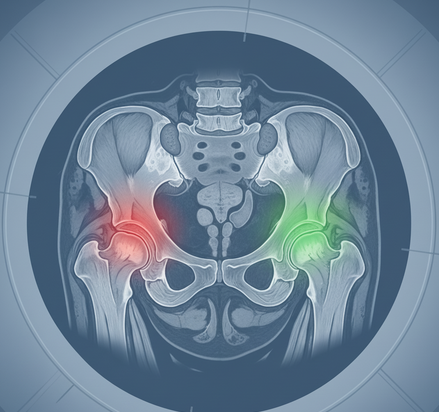Treatment Overview
MRI pelvic imaging is an advanced diagnostic tool used to evaluate pelvic pain and detect underlying conditions affecting a woman’s reproductive and urinary systems. Magnetic Resonance Imaging (MRI) uses powerful magnets and radio waves to produce detailed cross-sectional images of pelvic organs, including the uterus, ovaries, fallopian tubes, bladder, and pelvic muscles.
In Korea, MRI pelvic imaging is integrated into comprehensive pelvic pain evaluation programs, allowing gynecologists to obtain highly detailed and precise images without invasive procedures. This technology is especially useful when ultrasound or CT scans provide inconclusive results, and when conditions such as endometriosis, pelvic inflammatory disease, fibroids, adenomyosis, ovarian cysts, or pelvic tumors are suspected.
Korea is recognized globally for its advanced diagnostic facilities, combining cutting-edge MRI technology with expert radiologists who specialize in women’s pelvic health.
Purpose & Benefits
The primary purpose of MRI pelvic imaging is to identify the cause of pelvic pain and provide accurate diagnostic information to guide treatment. Benefits include:
- High-resolution imaging with superior soft-tissue contrast.
- Non-invasive and radiation-free method, making it safe for repeated use.
- Precise localization of lesions, masses, or structural abnormalities.
- Detailed visualization of endometriotic lesions and deep pelvic structures.
- Enhanced surgical planning when combined with laparoscopic or robotic procedures.
MRI is especially valuable for women with chronic pelvic pain, unexplained infertility, or complex gynecological conditions that require detailed assessment before surgical intervention.
Ideal Candidates
MRI pelvic imaging is suitable for women who:
- Experience persistent or unexplained pelvic pain.
- Require evaluation of suspected endometriosis or adenomyosis.
- Have abnormal pelvic masses or ovarian cysts.
- Are planning gynecological surgery and need detailed preoperative imaging.
- Experience pelvic pain combined with urinary or bowel symptoms.
Korean hospitals provide tailored MRI evaluation services for both local and international patients, ensuring precise imaging and clear communication of results.
Possible Risks & Complications
MRI pelvic imaging is a safe procedure for most patients, with no exposure to ionizing radiation. However, certain considerations include:
- Discomfort due to lying still inside the MRI machine for 20–45 minutes.
- Claustrophobia in some patients, which can be managed with sedation or open MRI options.
- Possible allergic reaction to contrast agents used in some cases (rare).
- Limitations in patients with certain implants or metallic objects.
Korean facilities maintain strict safety protocols and offer patient-friendly approaches to minimize discomfort and risk.
Techniques Used
Korea’s MRI facilities are equipped with advanced systems, including 3T (Tesla) MRI machines that deliver exceptional image clarity. Specialized techniques include:
- High-resolution pelvic MRI for optimal soft-tissue imaging.
- Contrast-enhanced MRI to distinguish between different types of lesions.
- Diffusion-weighted imaging (DWI) to detect subtle tissue changes.
- Dynamic pelvic MRI for real-time assessment of pelvic floor function.
These advanced techniques help Korean radiologists produce precise and reliable results that guide effective treatment plans.
Recovery & Aftercare
MRI pelvic imaging is a non-invasive diagnostic test with no downtime. Most patients can resume normal activities immediately after the scan. Aftercare generally involves:
- Drinking plenty of water to help flush contrast agents (if used).
- Monitoring for rare allergic reactions following contrast administration.
- Reviewing MRI results with a gynecologist for further diagnosis and treatment planning.
Korean clinics and hospitals typically provide digital access to MRI results and images for patient convenience.
Results & Longevity
MRI pelvic imaging delivers immediate and highly detailed results. The clarity and precision of MRI help gynecologists detect pelvic abnormalities early, improving treatment outcomes. While the imaging itself does not treat conditions, it plays a critical role in guiding effective and personalized treatment plans, whether surgical or medical.
MRI scans can be repeated as necessary without harm, providing reliable long-term monitoring for chronic pelvic conditions such as endometriosis or adenomyosis.
Treatment Process in Korea
The process of MRI pelvic imaging in Korea is streamlined for efficiency and patient comfort. It begins with a consultation with a gynecologist or radiologist to review medical history and symptoms. The procedure steps include:
- Preparation, including changing into a gown and removing metal objects.
- Lying in the MRI scanner while images are captured, often with breath-holding instructions.
- Administration of contrast agent, if required, to enhance image quality.
- Image review by specialized radiologists.
- Results discussion with the referring gynecologist.
Korea is considered a top destination for MRI pelvic imaging because of its combination of advanced equipment, specialized women’s health expertise, rapid appointment scheduling, and patient-centered services, including English-speaking staff for international patients.
Cost Range
The cost of MRI pelvic imaging in Korea varies depending on the complexity of the scan and whether contrast agents are used. Typical costs include:
- Standard pelvic MRI: ₩500,000–₩900,000 KRW ($400–$720 USD).
- Contrast-enhanced pelvic MRI: ₩700,000–₩1,200,000 KRW ($560–$960 USD).
Some clinics offer packages combining MRI imaging with pelvic pain evaluations and consultations, providing a comprehensive diagnostic solution at competitive prices.
Popular Clinics in Korea
- Samsung Medical Center — Advanced MRI diagnostics and women’s health specialists.
- Asan Medical Center — World-class pelvic imaging services with expert radiologists.
- Severance Hospital, Yonsei University — Cutting-edge MRI technology for gynecologic evaluation.
- CHA Bundang Women’s Hospital — Specialized in pelvic pain diagnostics and treatment.
- Gangnam Women’s Health Clinic — Personalized MRI services with international patient care.




